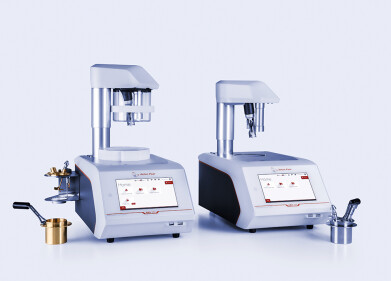Lubricant analysis
What Are the Properties of Solid Lubricants?
Apr 02 2022
From engine oils used by everyday motorists to heavy-duty greases favoured by qualified mechanical engineers, most people are familiar with lubricants. While oils, greases and penetrating lubricants are the most common, dry lubricants can offer excellent performance for some applications. Read on for a closer look at the properties of solid lubricants and how they’re used.
What are solid lubricants?
Made up of tiny particles, solid lubricants work to achieve the same goals as their liquid counterparts. They’re ultra-slippery and made from particles such as graphite, silicon, PTFE and molybdenum. Other forms of solid lubricants can include molybdenum disulfide (MoS2), talc, boron nitride, calcium fluoride and tungsten disulfide. Some are extracted from natural materials and others are synthetically manufactured. These materials are often blended with alcohol, water and other solvents to create a spray. Once applied, the liquid element evaporates and leaves behind a thin lubricating film.
The origins of solid lubricants
Solid lubricants were developed as a solution for the aerospace and aviation industries. Traditional oils and greases simply couldn’t perform under the extreme operating conditions, which forced engineers to develop better lubrication solutions using solid particles.
Applications for solid lubricants
The unique properties of solid lubricants make them suitable for applications where attracting dirt, dust and other debris is non-negotiable. Common uses include hinges, locks and threaded rods. All of these applications involve miniscule components that can’t be contaminated with oils, greases or even penetrating lubricants. Solid lubricants are a cleaner option, making them ideal for these types of applications.
Solid lubricants also step up for applications where surfaces are exposed to high temperatures or extreme pressure. These types of conditions can accelerate oxidisation in conventional oils and greases. The hard-wearing properties of solid lubricants make them suitable for applications where temperature and pressure could compromise the performance of oils and greases.
As well as offering good resistance against temperature and pressure, solid lubricants can be a good choice for applications where the surface is exposed to water, solvents or other substances that can deteriorate liquid oils and greases.
Testing the properties of solid lubricants
There are various different methods used to test the properties of solid lubricants, including the ASTM D2981-94(2019) Standard Test Method for Wear Life of Solid Film Lubricants in Oscillating Motion.
From reducing mechanical wear to avoiding catastrophic failure, a good lubrication strategy is critical to maintaining performance and efficiency. Solid lubricants are just one piece of the puzzle, with oils, greases and penetrating lubricants also playing a critical role. Find out more about the different types of lubricants available to mechanical operators, as well as a glimpse of what’s next for the petroleomics sector, in ‘What Are the Chemical & Physical Properties of Lubricants?’
Digital Edition
PIN 26.1 Feb/Mar 2025
March 2025
Analytical Instrumentation - Elemental Analysis for Quality and Process Control at Refineries, for Lubricants and Wear Metals in Engine Oils - Synthetic Lubricants: New Developments - Scaling...
View all digital editions
Events
Apr 08 2025 Birmingham, UK
Apr 08 2025 Kielce, Poland
Apr 08 2025 Ravenna, Italy
Apr 08 2025 Southampton, UK
Apr 08 2025 London, UK



















